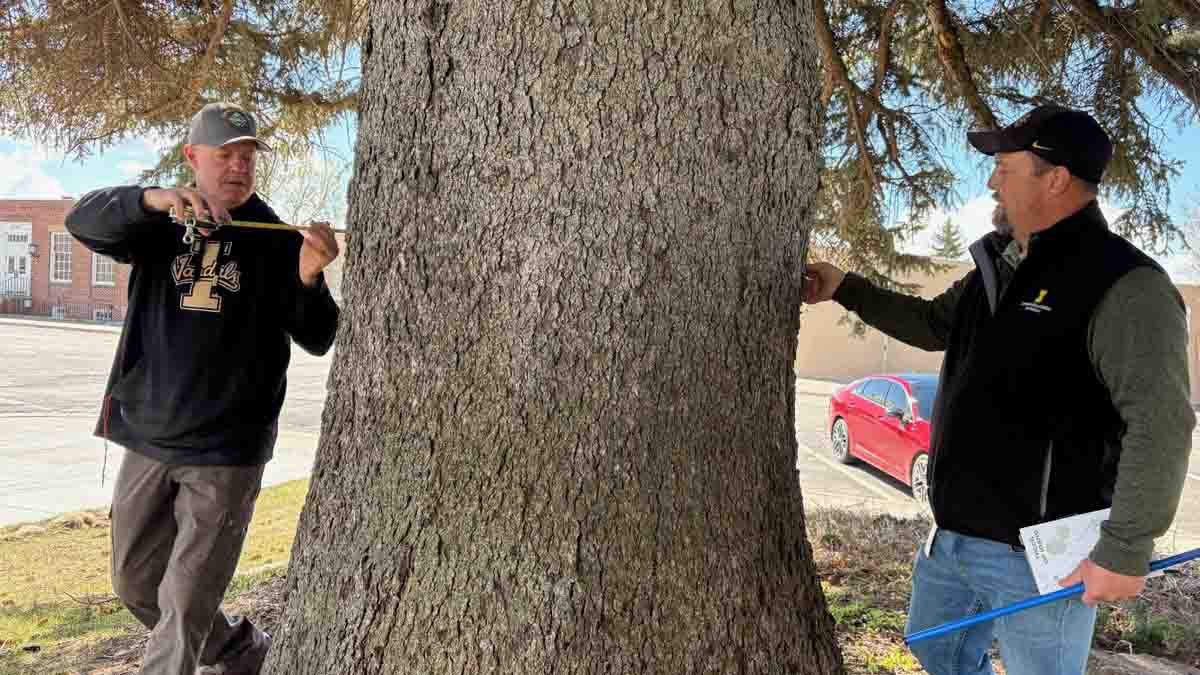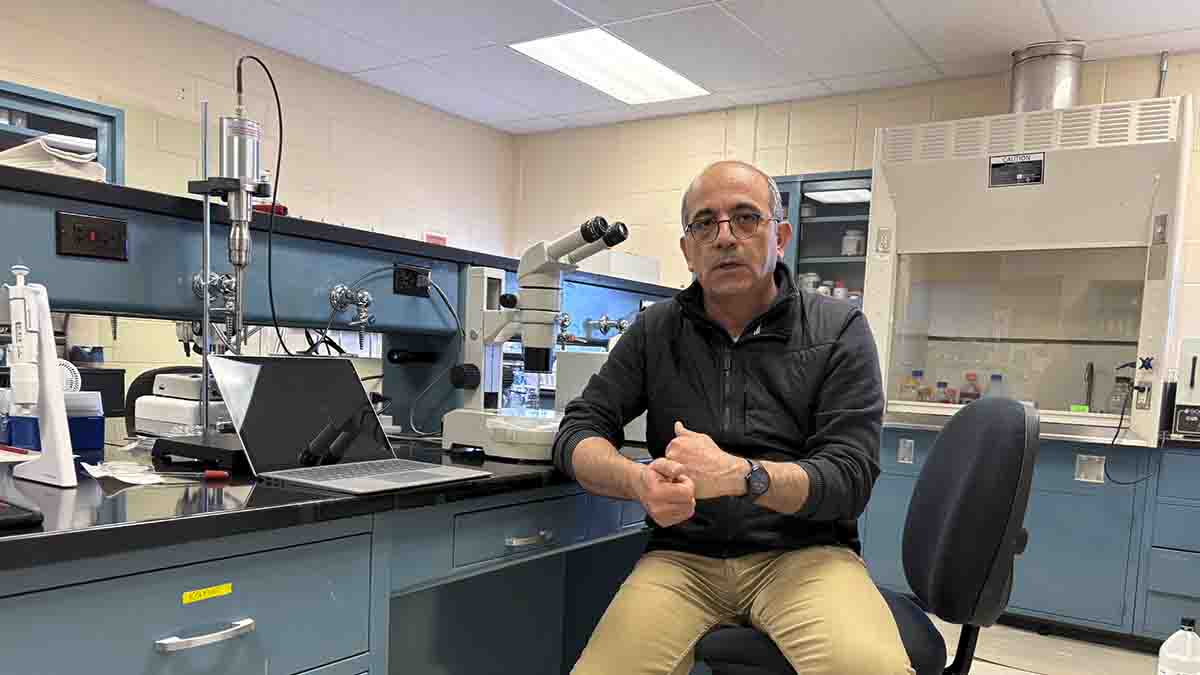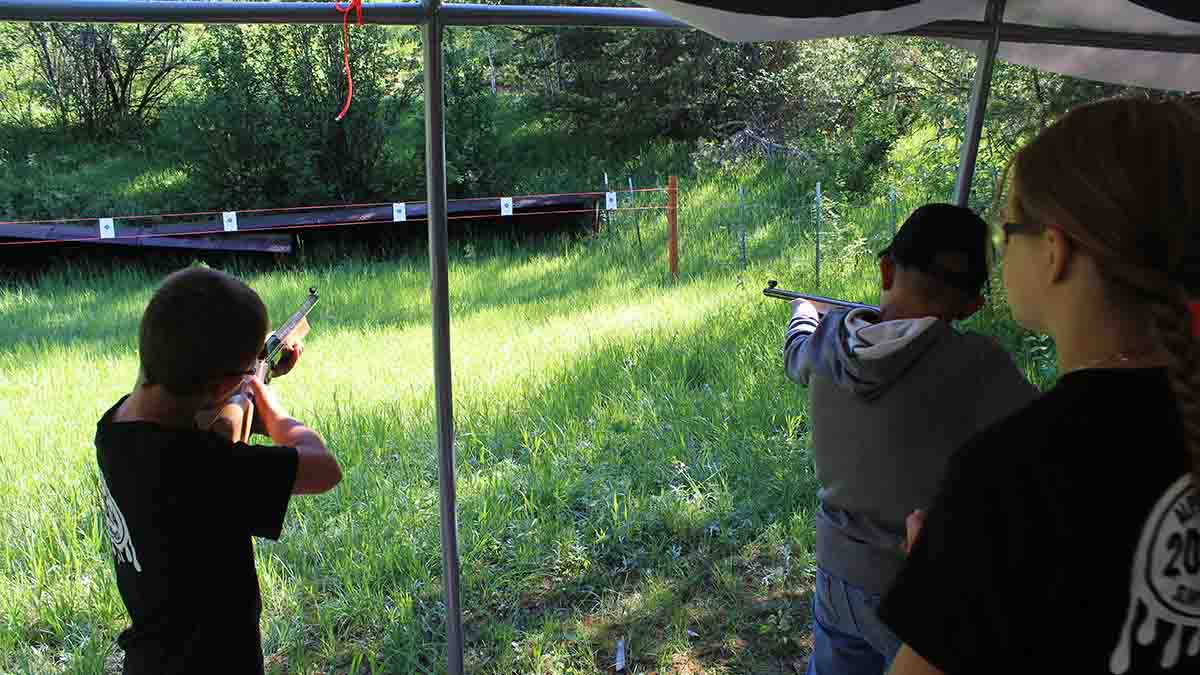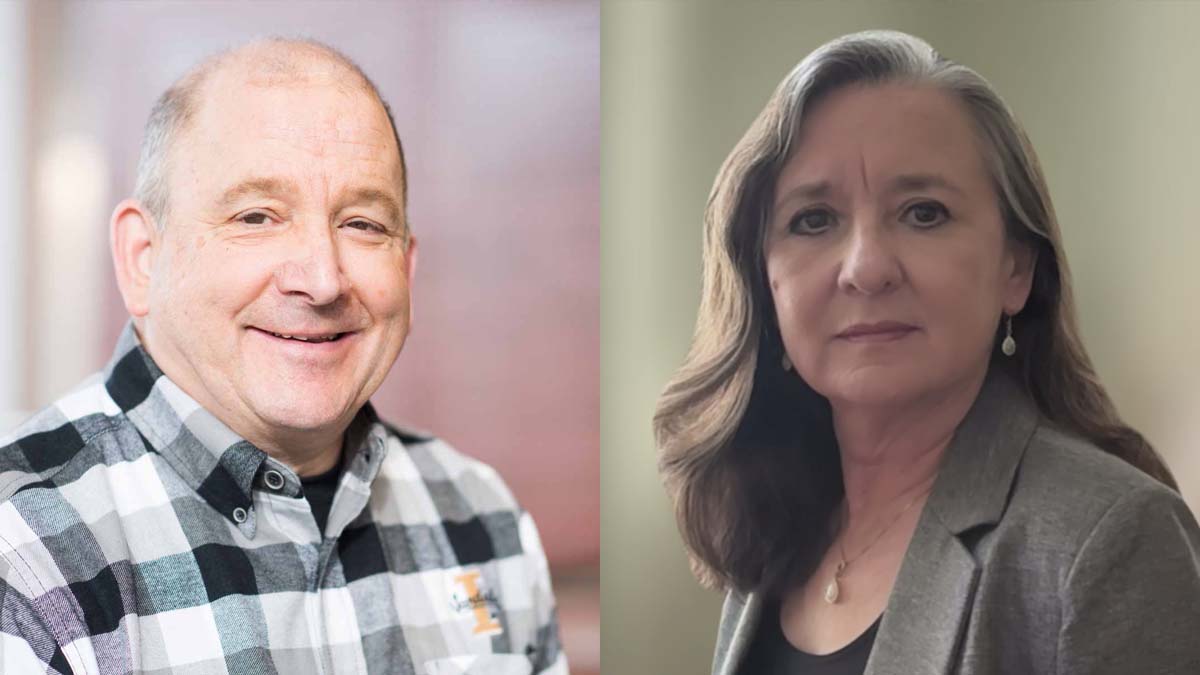Catching Up with CALS — June 11, 2025
The Quest for CAFE – A Brief History
A state-of-the-art milking barn with a rotary parlor is completed, and classrooms, a maternity barn and a commodity barn are taking shape at the Rupert-based Idaho Center for Agriculture, Food and the Environment (Idaho CAFE). The University of Idaho-led facility will include the nation’s largest research dairy when it opens in early 2026. Reaching the home stretch of CAFE construction has been a Herculean effort, decades in the making. Our college’s quest to see CAFE to fruition is a story of conviction, perseverance and commitment to an idea in the face of a seemingly endless string of obstacles. It’s also a tale about the power of partnerships and tackling a daunting task as a team — with government, industry and the university all working in tandem. Idaho ranks as the No. 3 dairy producing state and has an average herd size of 2,000 cows per operation. CAFE will have the capacity to accommodate up to 2,000 cows.
When complete, the center will be a leader in addressing constraints on water usage and environmental quality while supporting the agricultural sectors of dairy, livestock and cropland, as well as the food processing industries. Research conducted at CAFE will examine the environmental footprint of dairying in the West while hosting long-term experiments that evaluate the use of dairy manure in crop production and assess soil health and water use to support a profitable and sustainable dairy industry in Idaho and beyond. We are confident CAFE will support the dairy industry’s U.S. Dairy Net Zero Initiative, vowing to advance research and technology to achieve net-zero dairy emissions by 2050.
Discussions about U of I participating in a research dairy capable of producing relevant science at an equivalent scale as Idaho producers trace back to 2003, shortly after Bob Naerebout started as executive director of the Idaho Dairymen’s Association (IDA). IDA and the Washington Dairy Federation envisioned U of I and Washington State University (WSU) collaborating on a large, bistate research dairy, with an emphasis on environmental research. As Naerebout recalls, plans of a partnership were quashed by project feasibility study results, concluding such a large research dairy would require considerable revenue from product sales to be viable. Based on the limited dairy processing capacity in northern Idaho and eastern Washington, milk sales from the research dairy would likely come at the expense of the region’s commercial suppliers, the studies found. WSU walked away from the project, and U of I began exploring locations in southern Idaho’s Magic Valley, where dairy processing capacity is far more robust.
IDA board members at the time, including Mike Quesnell, the late Dr. Bill Stoudar and President Mike Roth, championed the Magic Valley proposal, which we were calling the Idaho National Center for Livestock and Environmental Studies (INCLES). The INCLES proposal also encompassed a state diagnostic lab, a beef feedlot and corrals for sheep research, accommodating Idaho’s major animal agriculture industries. Idaho’s federal delegation also backed the project, pushing through legislation affording greater flexibility in fiduciary management. The coalition in support of the project broadened to include United Dairymen of Idaho, Allied Industries, the College of Southern Idaho (CSI), the Idaho Cattle Association, the Idaho Wool Growers, the Idaho National Laboratory and federal agencies. State leaders, such as former senator Shawn Keough, R-Sandpoint and former reps. Maxine Bell, R-Jerome, Bert Stevenson, R-Rupert, and Scott Bedke, an Oakley Republican who is currently lieutenant governor, also helped lead the charge. The first large influx of funding for the concept came in 2007, when former Gov. Butch Otter included $10 million for INCLES in his budget, and the Idaho Legislature approved the appropriation.
Environmental litigators’ lawsuits targeting the dairy industry made the need for such a facility even more urgent. One Idaho dairy lost a lawsuit regarding the filing of federal emergency services reports, and another lawsuit led to new dairy regulations requiring mitigation for ammonia emissions. “We lost those cases because we didn’t have good science to back up the industry,” explained Rick Naerebout, current IDA CEO. “They’re a catalyst to us building the body of science to understand what dairies’ environmental impacts are. A large research dairy will help us validate our practices and make improvements to make sure we’re better protecting the environment.”
Momentum behind INCLES came to an abrupt halt, however, in 2009 when the state pulled back its $10 million appropriation, seeing an opportunity to allocate the unspent revenue for other priorities amid the Great Recession. “It really went quiet from 2009,” Rick Naerebout recalled. “It took all of the wind out of the sails of the project coming together.”
The project morphed once again into the Western Initiative for the Dairy Environment (WIDE), overseen by U of I’s Office of Research and Economic Development (ORED). WIDE dropped the sheep and beef cattle components. The diagnostic laboratory, which the Idaho State Department of Agriculture intended to build as a standalone project, was also removed from WIDE. Though WIDE failed to gain traction, the need for environmental dairy research remained as great as ever. In 2013, five dairies in the Granger, Washington, area were singled out by the Environmental Protection Agency and environmental litigators in response to allegations they failed to adequately control nitrogen losses to the environment from their operations. The EPA, through the Department of Justice, recently alleged the dairies didn’t comply with a consent agreement they executed with the agency a decade ago, effectively putting all but one of the five dairies out of business.
During the spring of 2014, former U of I President Chuck Staben made a presentation during the IDA Legislative Banquet about renewing the push for a research dairy. In January 2018, Gov. Otter committed another $10 million into the state’s Permanent Building fund for the project, asking industry to provide matching funding. That summer, Staben asked me to lead the research dairy project. To free time for me to devote to the effort, as well as toward solidifying relationships with other stakeholders in the agriculture industry, we appointed Cathy Roheim as senior associate dean. We gave the project a fresh name — Idaho CAFE. We reimagined what it would include — adding a demonstration farm linking plant and animal agriculture research, a discovery center to teach the general public about food production in the state and an expansion of CSI’s Applied Technology Institute (ATI) encompassing dairy processing. We anticipated building all three projects on a $45 million budget. I spent countless hours driving throughout the Magic Valley, usually accompanied by other project supporters such as Rep. Bell and our former government and external relations director, Brent Olmstead. We purchased land at the crossroads of U.S. Highway 93 and Interstate 84 in Jerome for the discovery center. We looked into buying existing dairies and renovating them for research purposes but determined that route would result in little savings while leaving us with older facilities that would need to be converted into a research dairy. In March 2019, we closed on the CAFE dairy and demonstration farm site — a square mile of Rupert farmland, sold with a significant donation by the Whiteside family. To buy the land, we contributed $2.5 million from sales of research and Extension center property in Sandpoint and Caldwell, matched with $2 million from IDA.
In the summer of 2022, we celebrated the ceremonial groundbreaking of Idaho CAFE at the Rupert site. The Idaho Board of Land Commissioners gave us the largest piece of the funding puzzle in September 2022, when it voted unanimously to invest $23.25 million from the sale of university endowment land in Caldwell into CAFE. We raised another $9 million in large donations from major stakeholders, including Chobani, Simplot, Power Engineers, Glanbia, AgWest Farm Credit, Scoular, Redox, Idaho Farm Bureau Federation, Idaho Barley Commission, Cargill, Nelson Jameson, Commercial Creamery and Idaho Milk Products, among others. The groundbreaking, however, proved to be a false start. Construction costs had steadily risen, and bids came in higher than anticipated. General contractor McAlvain Construction rebid subcontracts during the winter, and a year passed before any real construction commenced. The discovery center and ATI expansion had to be removed from the project to keep us on budget.
We’re fortunate and grateful that our governor and state Legislature have remained steadfast in their support of CAFE and recognize the benefits to the agriculture industry and the state. During the 2025 session, the Legislature appropriated $250,000 toward building maintenance funds for the new milking parlor. Beyond facilities, the Legislature has approved six positions associated with CAFE, including four faculty members — a forage specialist, an air quality specialist, a ruminant nutritionist and a 4-H STEM position — and two staff — a CAFE director and a research coordinator.
We have also received support at the federal level through U.S. Congressman Mike Simpson. He has secured $3 million in Community Project Funding for CAFE so far and we are hopeful that Congress passes the fiscal year 2026 Agriculture, Rural Development, Food and Drug Administration, and Related Agencies Appropriations Bill, which includes an additional $3 million request to complete a flexible manure research system at CAFE.
We’re poised to finally start milking operations at CAFE in early 2026, beginning with a herd of 400 cows in the first year and gradually ramping up our numbers. Getting to this point has been a marathon, and it’s worth noting that CAFE is but one of nine capital projects we’ve tackled during my time as dean. Building facilities, however, is only the beginning of our work. Regarding CAFE, the dairy industry regularly shares its priorities with CALS faculty and department heads, and for the facility to realize its potential as a game-changer, it’s incumbent upon us to heed the guidance and prioritize research topics dairymen demand while avoiding projects that may appeal to academia but have limited real-world applications. “From an industry perspective, we need U of I and the college turning out tangible, applied research,” Rick Naerebout advised. And it’s equally critical that we keep state lawmakers and members of the Legislature’s Joint Finance-Appropriations Committee (JFAC) apprised about how CAFE research makes Idaho dairies more efficient, profitable and environmentally sound. We’ve gone to great lengths to deliver a one-of-a-kind research dairy to our state. Soon we’ll reap the rewards.

Michael P. Parrella
Dean
College of Agricultural and Life Sciences
Our Stories
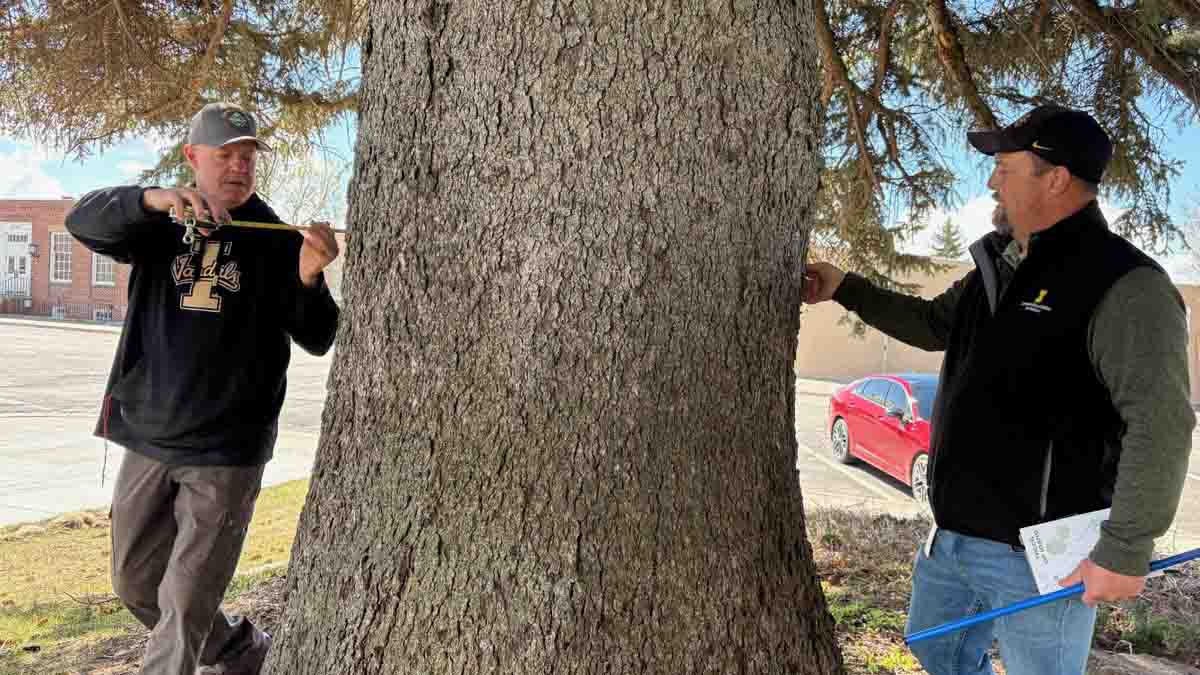
Branching Out
University of Idaho Extension forestry specialist Randy Brooks showed a North Fremont High School horticulture class two cross sections of tree trunks, one of which was about triple the size of the other.
Despite the disparity in circumference, Brooks assured the class that both specimens were roughly the same age based on tallies of their tree rings. As the class learned, Idaho forests have become overcrowded and species composition has shifted due to decades of management emphasizing fire suppression, and resulting over-competition has stressed and stymied the growth of many trees.
Though northern Idaho is the hub of forestry in the state, Brooks and the UI Extension forestry program have emphasized educational outreach and student recruitment efforts in eastern Idaho lately, believing good environmental stewardship should be taught statewide.
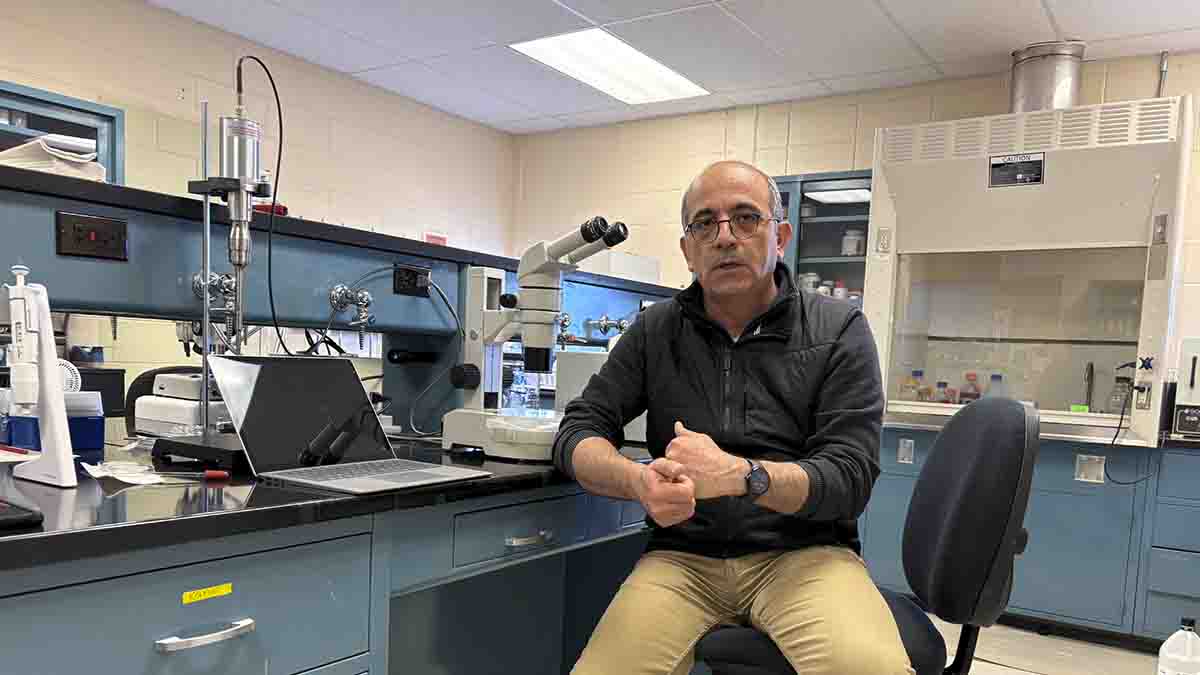
Nematode Testing Expanded
A soil-testing service University of Idaho expanded into eastern Idaho in late 2023 is filling an important niche for farmers whose crop yields are being stymied by plant-parasitic nematodes.
The U.S. Department of Agriculture estimates plant-parasitic nematodes — which are microscopic, unsegmented roundworms that live in the soil and damage plants through their feeding — cause at least $10 billion of crop loss in the country annually. Nematode species can also be beneficial, feeding upon insect pests and other nematodes.
Pooria Ensafi, a nematologist and postdoctoral research fellow, screens soil samples for all types of nematodes at the U of I’s Idaho Falls campus, providing growers with a detailed report of confirmed species, population densities and recommended control options. He’s primarily concerned with nematodes affecting potato, sugar beet and cereal production, and he’s ramping up soil-testing services for growers, as well as nematology research, this year at the eastern Idaho lab.
“This gives an upper hand to the grower,” Ensafi said. “First, they check their soil and determine what the problem is. If they have cereal cyst nematode over a certain threshold, for example, then they may choose a cereal variety that can suppress the growth of the nematode below the threshold.”
Other control options for growers may include diversifying crop rotations to avoid continuous cereal production, management approaches such as planting cover crops and chemical applications in extreme cases.
Nematode pressure is most acute in eastern Idaho, especially from nematodes affecting potatoes and cereals. Prior to the opening of Ensafi’s lab, however, the region’s growers had to send their soil samples west to the U of I’s Parma Research and Extension Center for university nematode testing. Having access to a lab close to home should save regional growers time and shipping while also minimizing the handling of soil samples that must be kept cool for nematodes to remain viable.
Ensafi’s nematode testing program is certified to accept out-of-state samples and is also temporarily handling the testing of western Idaho soil samples for nematodes — until U of I hires a new Parma-based nematologist to replace Saad Hafez, who retired in October of 2024.
Ensafi, who analyzed 25 grower samples in the Idaho Falls lab in 2024, plans to steadily increase both his nematology research and soil testing for growers throughout this year. The testing service is supported by grower fees.
A primary benefit to growers of having an Idaho Falls-based nematode testing service is that U of I has a broad pathology team working there to identify other diseases and pest problems affecting crops. Growers who may be mystified about the causes of crop damage can rest assured that researchers from various backgrounds and disciplines will be available to evaluate their samples through different lenses. For example, Kasia Duellman, an associate professor and Extension specialist, is an expert in seed potato pathology, and Juliet Marshall, a professor and associate director of the Idaho Agricultural Experiment Station, is a cereals pathologist, and both researchers have offices in Idaho Falls.
“In the very complex environment of the soil, nothing occurs in isolation,” Marshall said. “If you have a high nematode population that’s causing damage to the plants, we can’t assume that’s the only thing happening. In potatoes especially, there seems to be a lot of complex interactions between nematodes and soilborne diseases.”
Ensafi’s lab relies on temporary help to process samples from students and others during the busy spring planting and fall harvest seasons.
The Idaho Agricultural Experiment Station allocated funds for equipment and supplies to develop assays used to confirm nematode species in laboratory testing. Lab workers isolate nematodes from soil samples using a centrifuge. Ensafi is skilled at identifying nematodes both using molecular tools and visually.
“There are very few people who have that skill, who can visually take the nematode, put it under a microscope and characterize what kind of nematode it is,” Marshall said.
One of the most economically impactful nematodes evaluated by the program is cereal cyst nematode (CCN). Ensafi is working to develop standardized CCN laboratory testing protocols to ensure results from different labs are comparable.
The university partners with farmers in the Rexburg, St. Anthony and Ashton areas who have high CCN pressure and offer their fields to U of I Extension for special trials evaluating wheat and barley varieties for resistance to the pest. In exchange for their help, Ensafi provides growers a free analysis of the good and bad nematodes in their soils.
Initially as a doctoral student studying under Marshall and now as a postdoctoral researcher, Ensafi has emphasized studying CCN resistance in wheat varieties, and he’s poised to publish a research paper on the topic. He’s confirmed CCN resistance in a few popular wheat varieties in eastern Idaho, including UI Gold and WB-Rockland. The next step in his research will be to isolate genes responsible for conferring CCN resistance to guide crop breeding efforts.
Marshall’s current doctoral student, Nadia Poiras, has been researching CCN resistance in barley varieties.
In July, Ensafi anticipates concluding a separate project for which he’s taken soil samples from 150 locations in fields spanning from Ashton to Kimberly to create a distribution map of nematode species. He’s optimistic the project will result in the identification of new nematodes to the state, and possibly the discovery of previously undocumented nematode species.
Yet another research project with which he’ll be involved will seek to determine if farmers can effectively control important nematode species by planting cover crops that aren’t nematode hosts or possess chemicals that function as natural nematicides. The study will also evaluate the ideal timing and method for terminating these cover crops.
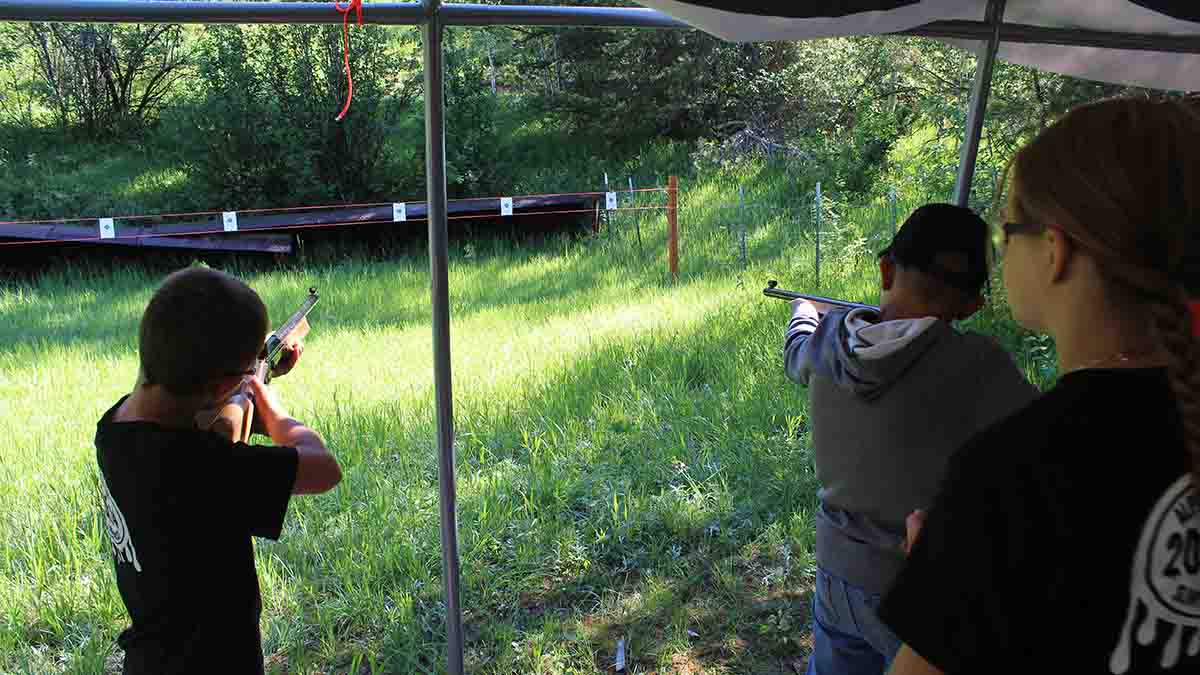
Camp for Families
University of Idaho Extension 4-H Youth Development summer camps are no longer just for kids.
4-H Alpine Family Camp — a program that’s launching this summer serving eastern Idaho — will enable Mom and Dad to share in the outdoor fun and activities with all of their children.
The camp is scheduled for June 20-21 at the Alpine 4-H Camp in Alpine, Wyoming, which is cooperatively owned by some of UI Extension’s eastern Idaho county offices and the U.S. Forest Service.
UI Extension educators Paige Wray, Bonneville County, and Kari Ure, Bear Lake County, created the program with the aim of promoting family bonding.
“I always feel like families are very busy and it’s hard to find time to spend together,” said Wray, who has a background in teaching Extension classes that strengthen families. “I’ve loved to see that change in the families and see them come together and learn about their family values, letting their kids’ voices be heard.”
Ure hopes the camp experience will demonstrate to families that camping and spending time outdoors can be simple and inexpensive, while providing them a template to plan their own trips in the future.
The fee to participate is $20 per family. Each family will be assigned a private cabin, and the facilities have running water. The camp is situated in a heavily forested area adjacent to Palisades Reservoir.
“It’s amazing how close it is to town, but you feel like you’re up in the mountains,” Ure said. “You don’t need a lot of money to get away and enjoy nature together.”
Families will gather at 4 p.m. on a Friday and will leave after 4 p.m. on a Saturday. Breakfast on Saturday will be included, but families will be asked to bring their own Friday dinner and Saturday lunch.
Activities will have an Olympic theme, taking advantage of amenities at the camp including a grass field, a hiking trail with an overlook of all of the cabins and the lodge, a shooting range and an archery range.
“I do think it’s fulfilling an opportunity for families to be together, especially at a low cost, without requiring a lot of time off of work,” Wray said.
Wray knows of a few counties in Utah that have offered family 4-H camps for several years and contacted those offices for guidance. Wray plans to ask participants in the inaugural U of I family camp for input on the length of the camp, as well as other details. In the future, she would like to expand the program, offering more family camps to different groupings of counties, or even to individual counties.
“Our focus might be a little bit different than the other family camps I’ve seen as we’re trying to build togetherness skills rather than just trying to have a fun time,” Wray said.
Faces and Places
J.R. Simplot Endowed Dean Michael Parrella will discuss his career at University of Idaho during Ag Talk Tuesday, scheduled for 10 a.m. PT online. The hour-long program includes crop updates and a guest speaker. Professor Juliet Marshall, associate director of the Idaho Agricultural Experiment Station, will be the host.
CALS students Lena Weaver, Makenzie Voges and Rachel Wandell attended the Nugget All-American Show and Sale in Reno, Nevada, securing Reserve Champion Suffolk Ram for a standout yearling ram. Dino Vinci, Sheep Center manager, also attended the show.
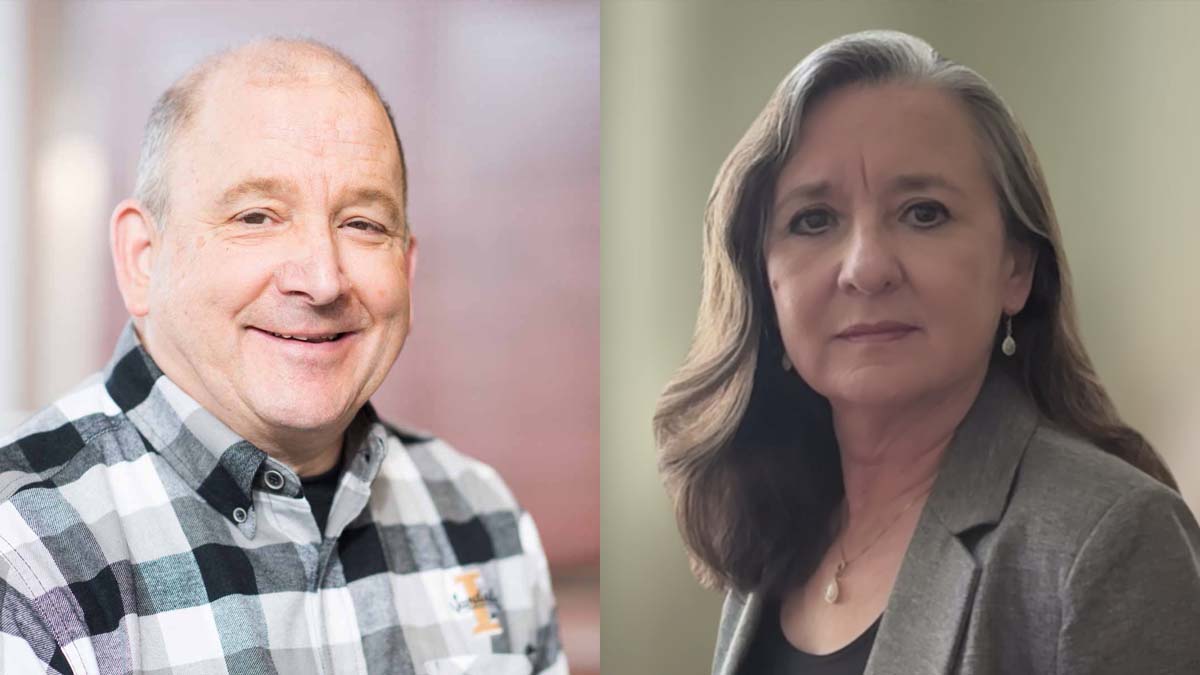

CALS in the News
- June 4 | New York Times | It’s not just poor rains causing drought. The atmosphere is ‘thirstier.'
- June 2 | Intermountain Farm and Ranch | UI Extension forest ecology education branching out to east Idaho
- May 30 | Capital Press | UI, Northwest association plan second canola research tour
- May 30 | Idaho Capital Sun | Idaho agriculture could spoil under weight of arbitrary tariff tax increases
- May 30 | Intermountain Farm and Ranch | New technology, the virtual fence keeps cattle where you want them
- May 29 | Idaho Ag Today | Omega 3
- May 29 | Idaho Statesman | How AmeriCorps cuts threaten Idaho education and schools
- May 28 | Lewiston Tribune | Pretty but deadly: Get your weeds before they get you
- May 27 | Teton Valley News | 4-H awards senior scholarships, prepares for a busy summer
Events
- June 12 — Stress Management, Living Life Essentially, Online
- June 13 — Pruning to Restore White Pine, Sandpoint
- June 16 — U of I/Limagrain Cereal Seeds Collaborative Crop Tour, Genesee
- June 17, July 1 & 15, Aug. 5 & 19 — Ag Talk Tuesday, Online
- June 18 — Dementia Friends, Online
- June 20 — Dean Parrella Retirement Celebration, RSVP by June 17, Moscow
- June 23-26 — 4-H State Teen Association Convention, Moscow
- June 23-27 — FCS Base Camp, Moscow
- June 24 — Idaho Home Garden Tips, Online
- June 24 — Snake River Weed Management Tour, Aberdeen Research and Extension Center
- June 25 — Snake River Weed Management Tour, Kimberly Research and Extension Center
- June 30 — Agricultural Genomics Course for Teens, Hagerman
- July 31 — Poverty in Idaho, Considerations for Community Partners, Online







